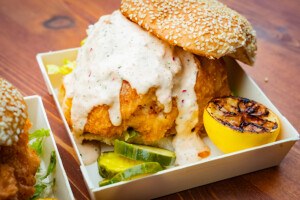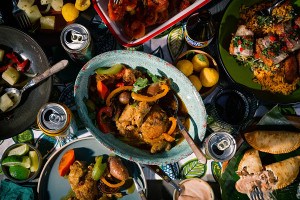Lost in the Supermarket: Chinatown
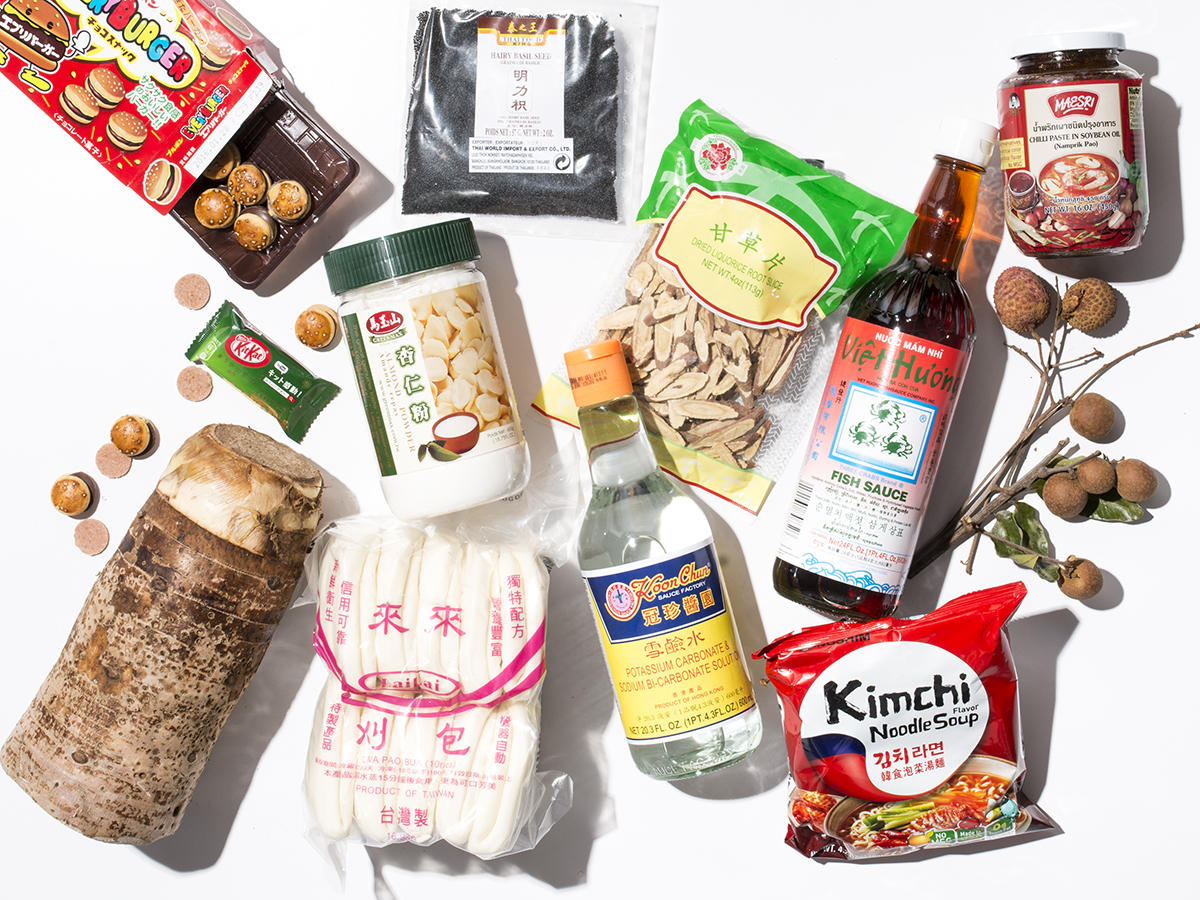
Photo by Toan Trinh
In his phenomenal new book, “New York in a Dozen Dishes,” renowned food scribe Robert Sietsema (Lucky Peach, Eater New York) delves into the history of some of America’s favorite dishes such as pizza, pastrami, and even egg foo yong, those lowly, gravy-smothered pucks that are part and parcel of the Chinese-American takeout trade. Equal parts love letter and obituary, Sietsema follows each fatty, greasy globule from inspired inception to its place in today’s culinary landscape, which for egg foo yong and its equally maligned brethren (i.e. chop suey, chow mein, and orange chicken), could be facing an extinction of sorts.
Sietsema points to several key factors surrounding the moribund Chinese-American category, including the relaxed immigration laws of the ’60s and ’70s, which gave rise to a diverse and more authentic range of regional Chinese fare; Chinese-American restaurateurs eschewing fried rice and chow mein for more lucrative ethnic cuisines like Thai and Vietnamese; and the pervasiveness of Hong Kong-style supermarkets, pandering not only to immigrants from Qingdao, Yunnan, and Xi’an, but that new breed of food-obsessed Americans.
That ubiquity of choice, albeit exciting, is still a relatively new phenomenon. So, how to expertly navigate that Asian superstore, the boutique boulangerie, and even your better-than-average bodega? There’s only so many ways to utilize soy sauce and sriracha, let alone mustard (dijon, hot, or otherwise). To go deeper into the canon of Tunisian, Taiwanese, and even good ol’ American food, we’ve tapped the experts in a new series we’re calling, Lost in the Supermarket.
In our debut edition, we’ve asked chef Mark O’Leary and Shojo co-owners Brendan and Brian Moy to take us around to their favorite Chinatown shops to learn what they buy and how they cook it. Their choices included the most nuanced “cheap” fish sauce, the secret ingredient to great tom kha gai, and one powdery confection that O’Leary guiltily eats by the spoonful.
C-MART SUPERMARKET

Photo by Olga Khvan
Hairy Basil Seeds:
O’Leary compares these to chia seeds, except with a tapioca-like texture that occurs after soaking. “On their own they don’t have that much flavor,” O’Leary says. “But they’re like a sponge, they’ll absorb the essence of their surroundings. So, if I’m making a lychee purée for example, they’ll soak up all that flavor.” At Shojo, O’Leary puts them into his green tea panna cotta, as well as any number of cakes and custards.
Licorice Root:
To achieve a natural anise flavor in desserts, or an herbal, earthy note in soups and stews, the chef will throw in some chunks of licorice root along with dried mushrooms and kombu. “Licorice root might seem foreign, but it has a very familiar flavor— it’s something you can’t achieve with normal dried herbs you just have hanging around your pantry.”
Dried Thai Chilies:
O’Leary prefers dried over fresh chilies because (sans seeds) they add smoky, nutty notes and a tempered heat. Bar manager Marcus Yao demonstrates their versatility by infusing them in vodka for Shojo’s most popular cocktail, Kamehameha, which he blends with GrandTen’s Fire Puncher vodka, coconut milk, and lemon.
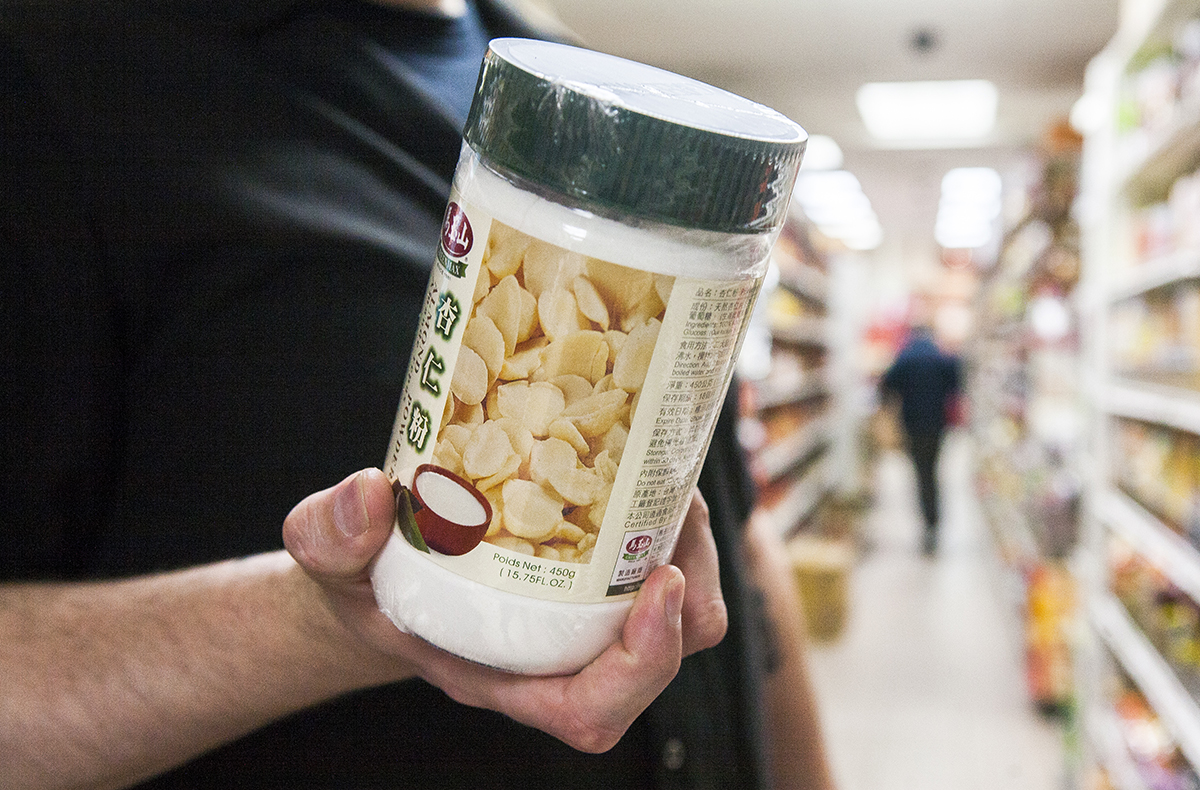
Photo by Olga Khvan
GreenMax Almond Powder:
When O’Leary and his chefs aren’t eating this straight out of the jar, they like to sprinkle it on Shojo’s passion fruit olive oil cake in lieu of powdered sugar. “This stuff is awesome, it’s almost like essence of almond, but in powder form. It’s like crack.”
Maesri’s Nam Prik Pao:
Nam prik pao—a combination of chilies, garlic, shallot, soybean oil, and dried shrimp—is the key to really good tom kha gai, according to O’Leary. “It’s something that people omit a lot of times, but it’s really important. My tom kha recipe is just lime juice, palm sugar, chicken stock, fish sauce, and a shitload of this. It helps rounds out the flavor and adds a ton of umami.”
Koon Chun Shrimp Sauce:
Looking to punch up tofu, chicken, or even milder seafood in baos or noodle dishes? O’Leary suggests adding a dollop of this fermented fish paste to help draw out more flavor. “It’s super pungent, so you only need a tiny bit.”
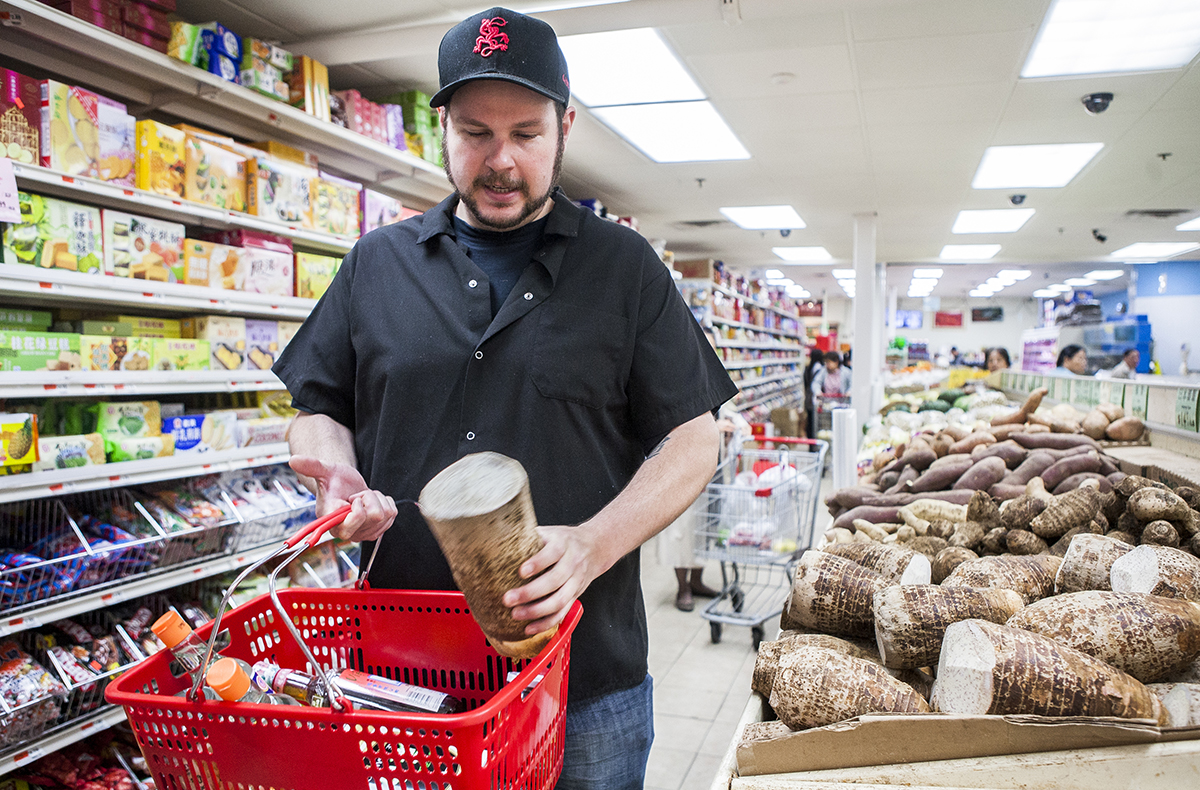
Photo by Olga Khvan
Taro Root:
In place of russets, O’Leary likes to use taro root to complement his increasingly popular “Shojonator” burger. “I’ll slice it really thin on a mandolin, fry them up, and use the taro almost like wonton chips,” O’Leary says. “We also use them in our ‘taro tots’ because it cooks very similarly to potatoes.”
Three Crabs Fish Sauce:
O’Leary fell in love with Three Crabs while working under Tim Cushman at O Ya. “It’s my favorite low-end fish sauce. It’s got the best flavor, just the right amount of sodium content, and it’s the cleanest tasting. It’s not obtrusive or overpowering. You’re looking for background notes—nobody wants a mouthful of fish sauce.”
Every Burger Cookies:
The guys at Shojo are admitted sweet-tooths, which is why you’ll see ravaged bags of green tea Kit Kats scattered throughout the kitchen, as well as these hamburger-shaped biscuits layered with vanilla and chocolate icing. When he can refrain from scarfing them down, O’Leary uses them as cheeky ornamentation on his “Escape From Cheeseburger Mountain,” a miso caramel mousse dotted with toasted almonds, a sesame chocolate crumble, Thai basil, and mint.
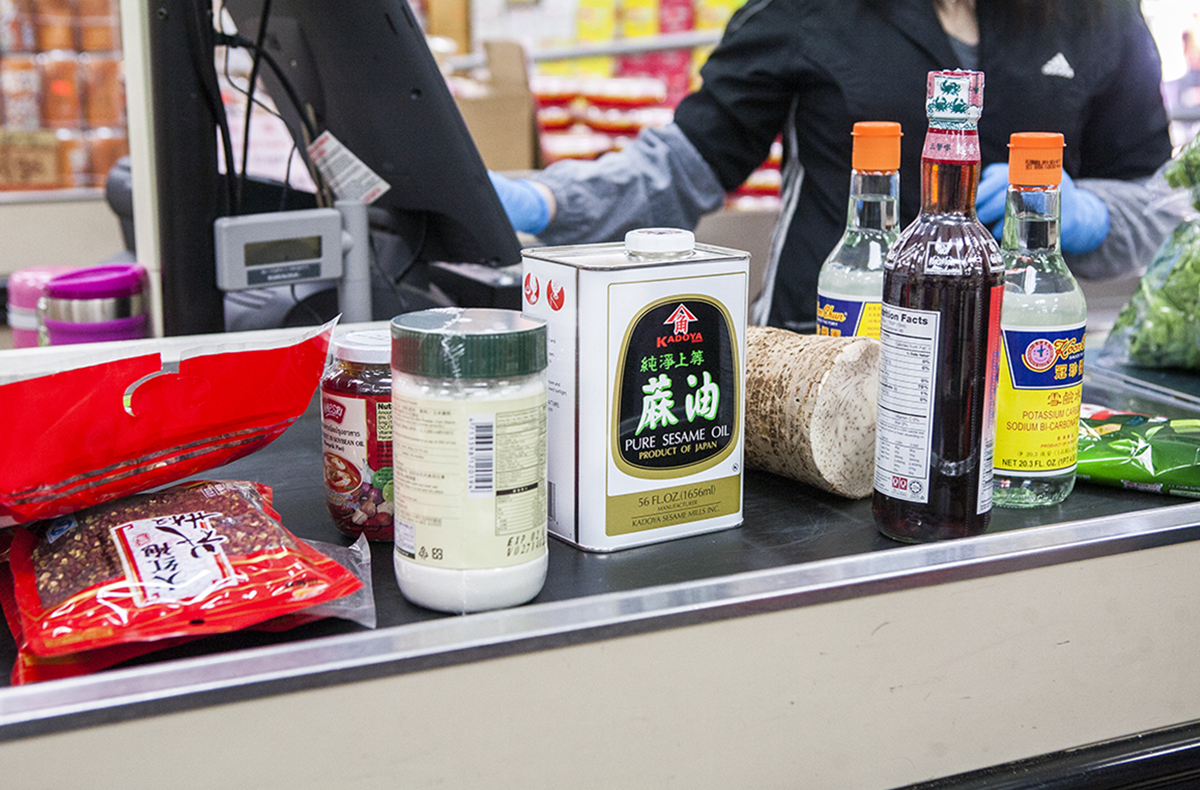
Photo by Olga Khvan
Koon Chun Potassium Carbonate:
Essentially liquid baking powder, potassium carbonate is what gives fresh ramen noodles their buoyancy and yellowish hue.
Nongshim’s Kimchi Ramen:
There are a number of key factors to Shojo’s outstanding “triple soup” ramen, made with duck, pork, and seafood broth—perhaps none more important than chewy noodles spun from the Moy’s’ super rare Japanese Yamato noodle-making machine. But at home, O’Leary tends to lean on Nongshim’s line of instant ramen for a nice easy go-to, something he dresses up with a raw egg, charred bok choy, and fresh mushrooms. “It’s the flavor packet that really makes it, with MSG, and chili, and dehydrated shrimp powder,” the chef says. “It’s the most dynamic example I’ve found because Nissin Top Ramen, and all that other bullshit, those are just garbage. They taste like a crushed up a bouillon cube.”
QUAN KEE PRODUCTS CO.
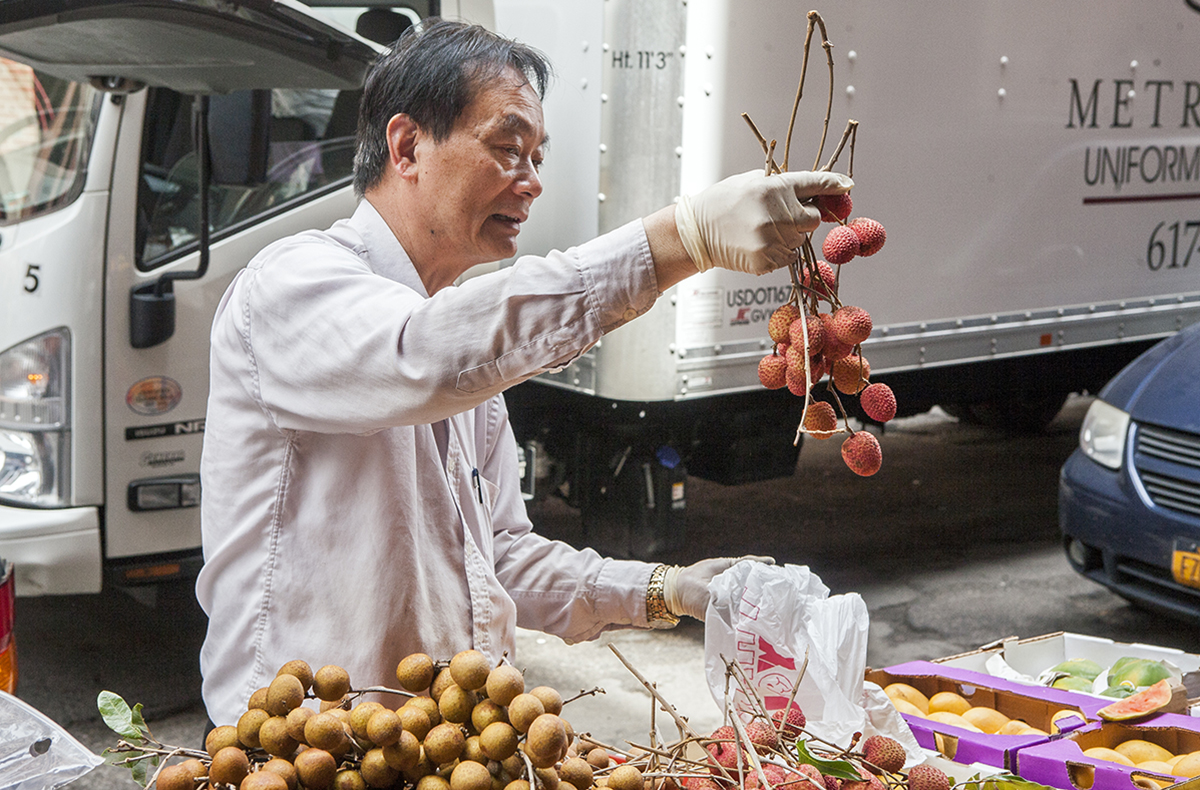
Photo by Olga Khvan

Photo by Olga Khvan
Lychees:
“I’m such a poor planner that most of the time I’m going, ‘Shit, what can I just put on the cakes tonight?’ We have a couple of really good cakes on the menu and they always have some kind of fresh fruit element to them,” O’Leary says. To help him with his last-minute dessert needs, O’Leary likes to stop by Quan Kee Products, a daily afternoon pop-up (See: minivan) on Beach Street selling everything from black walnuts to dragon fruit and pea greens. Lately O’Leary has gravitated to passion fruit and lychees, which he simmers into a compote and slathers on top of Shojo’s rotating custards and cakes.
NAM BAC HONG CHINESE HERBS
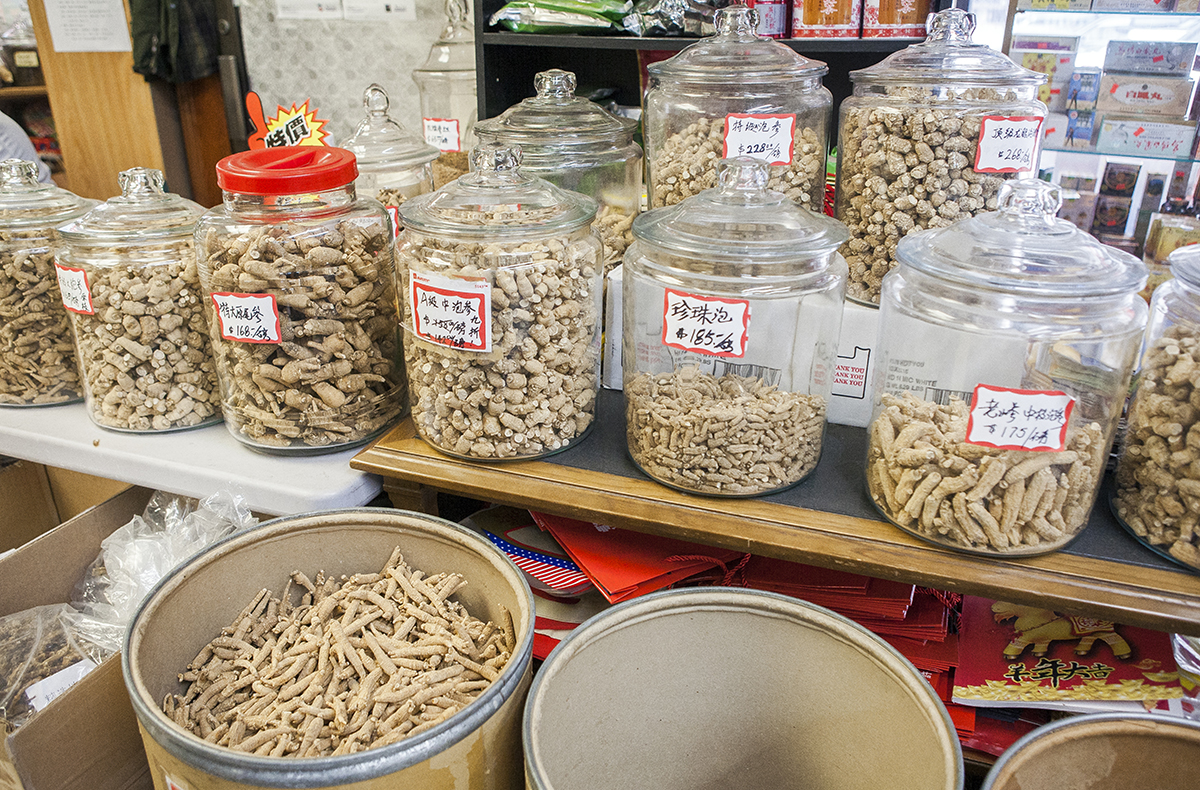
Photo by Olga Khvan
Haw Flakes:
To fight all manner of colds and illnesses as a child, Brendan recalls visiting medicinal herb shops like Nam Bac Hong, where dried herbs, roots, and teas were assembled for a quick recovery. His treat for ingesting the noxious tinctures was a cylindrical pack of Haw Flakes, pressed wafers made from Chinese hawthorn fruit. Moy calls this veritable penny-candy “The Chinese Fruit Roll-Ups,” which he would down roll after tangy roll. As an homage to that childhood memory, Brendan is currently using them in a sweet and sour sauce that he hopes to introduce to the Shojo menu later this summer.
HAPPY FAMILY FOOD MARKET

Photo by Olga Khvan
Live Seafood:
Happy Family might be the best worst kept secret in all of Chinatown. Enter the subterranean confines and you come face-to-face with burbling tanks filled with a myriad of aquatic specimens: prawns, lobsters, fist-sized surf clams, spiny Alaskan king crabs, whole snapper, and cockles. Point to your seafood of choice and watch them net it into a bag, hopping and agitated. Next, take your haul next door to The Best Little Restaurant, where the chefs will happily whip up an impromptu feast. Not sure about how you want those mussels cooked? Just tell them “Chef’s choice,” and prepared to be wowed.
“In Hong Kong, they always have a seafood market in front of a seafood restaurant,” Brendan says. “That way you can pick out whatever seafood looks the freshest, they’ll clean it up for you, and the chef next door will prepare it however you want. Asians are really big on ‘live,’ whether that’s chicken, fish, or any other kind of seafood. Just not beef. We hardly ever eat it. Beef in the States tastes super gamey to me.”
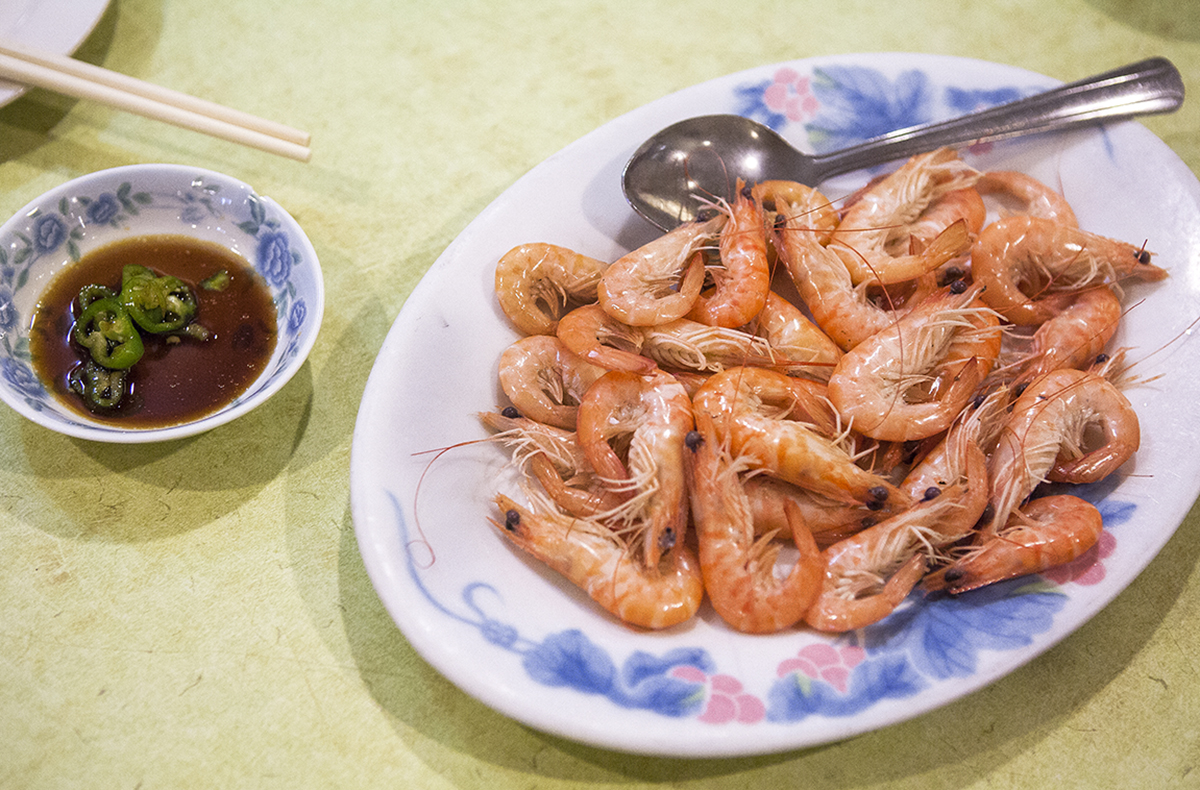
Boiled whole shrimp served with a jalapeno soy dipping sauce. Photo by Olga Khvan
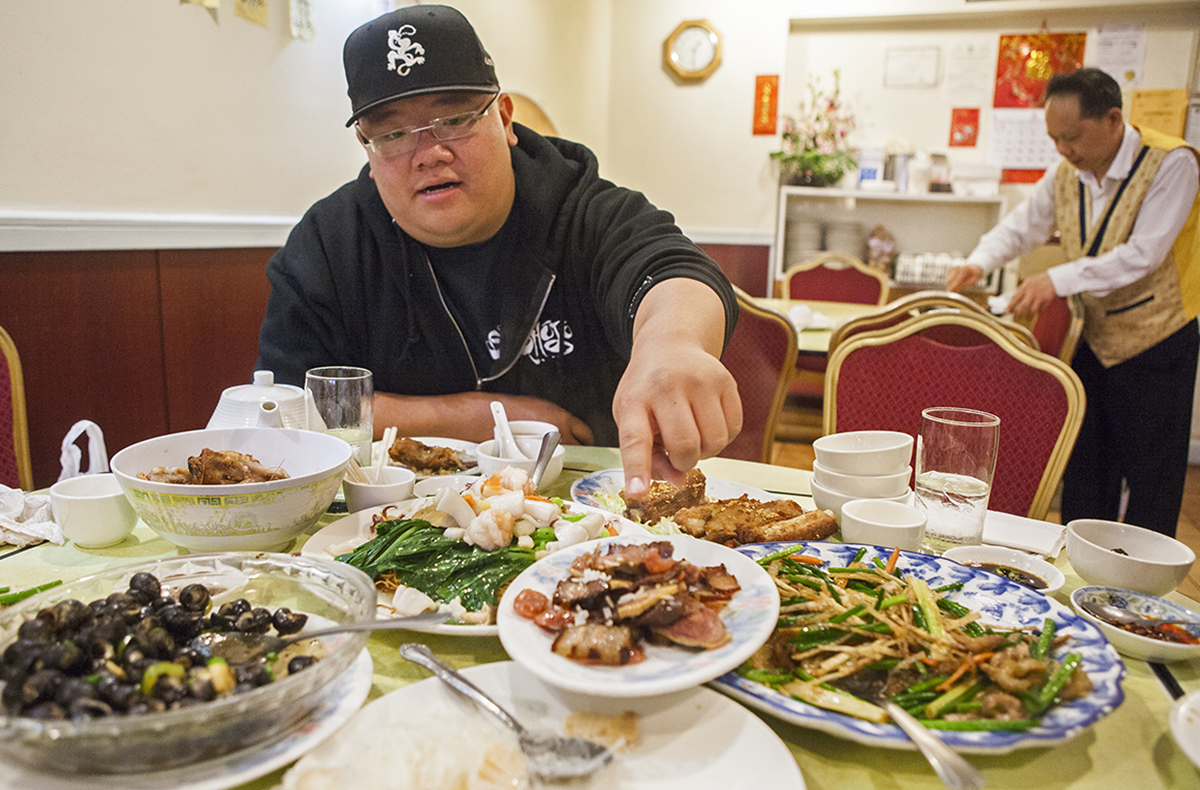
Wok-fried snails in a black bean sauce, surf clams with garlic vermicelli noodles, fried pork ribs, and more. Photo by Olga Khvan

